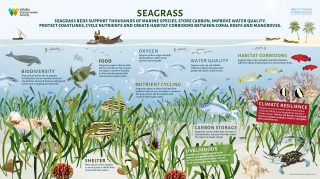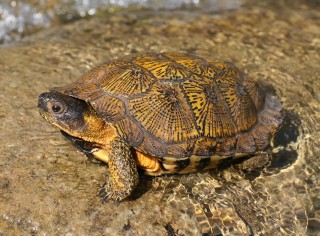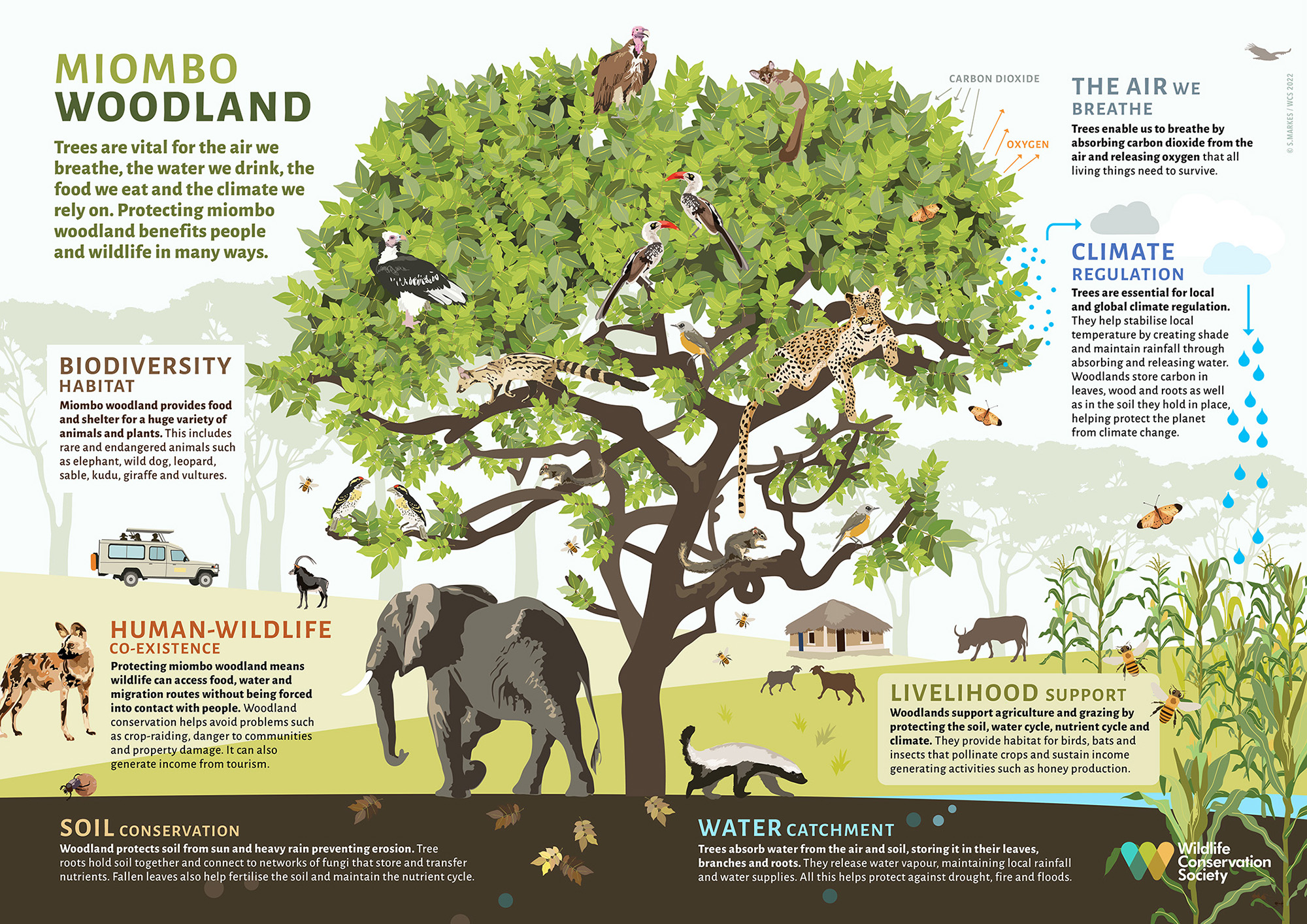
March 20, 2022
The Importance of Miombo Woodlands
- as seen by -
 Sarah Markes
Sarah Markes
Miombo Woodlands extend across much of central and southern Africa, from Angola in the west to Tanzania in the east, down to the northern edge of South Africa. The name originates from Bantu words for Brachystegia tree species which dominate this woodland type in addition to Julbernardia and Isoberlinia. Miombo trees are broadleaf and considered semi-deciduous given they shed leaves in the dry season, then produce a “flush” of new, brightly colored leaves just before the rains return.
Due to dry season competition for water, Miombo woodland trees are quite widely spaced. This allows sunlight to reach the ground and grasses to thrive, creating excellent grazing for many mammals. Miombo supports some of the largest populations of elephants in Africa and is crucial habitat for other endangered animals such as wild dogs, lions, leopards, rhinos, giraffes, and several species of vulture. Bird species endemic to this habitat include the Miombo pied barbet, scrub robin, wren warbler, and rock thrush. Miombo and its diverse flora and fauna also sustain the livelihoods of millions of people, providing ecosystem services such as water catchment, climate regulation, soil conservation, and pollination. Protecting this woodland habitat also helps reduce human-wildlife conflict by ensuring animals can access food, water, and migration routes without being forced into contact with communities and farms. Tourism is another opportunity for local and national income generation through preserving woodland and wildlife.
Sadly inevitably, Miombo, like many other areas of woodland and forest, is threatened by deforestation for charcoal making and timber, land clearance for farming and human habitation, and intense grazing pressure from livestock. Climate change is also having an impact with increased incidence of drought and more frequent fires taking their toll.
WCS Tanzania’s Ruaha-Katavi Program is working to safeguard key swathes of Miombo that form important wildlife corridors between protected areas. Increasing awareness of woodland conservation benefits is key to this work, and this poster was designed to support this. It is available in English, Kiswahili, and Portuguese. To request the files please email sarahindar@gmail.com.
EDITOR’S NOTE: To celebrate Women’s History Month, Wild View is featuring posts by and about women and their contributions to science and conservation throughout March.




Leave a Comment
Alexio
November 22, 2023 at 3:57 am
Ok
Jeannine
November 26, 2023 at 4:48 pm
Thɑnks for finally writing about > The Importance of Miombo
Woodlands | Wild View panda